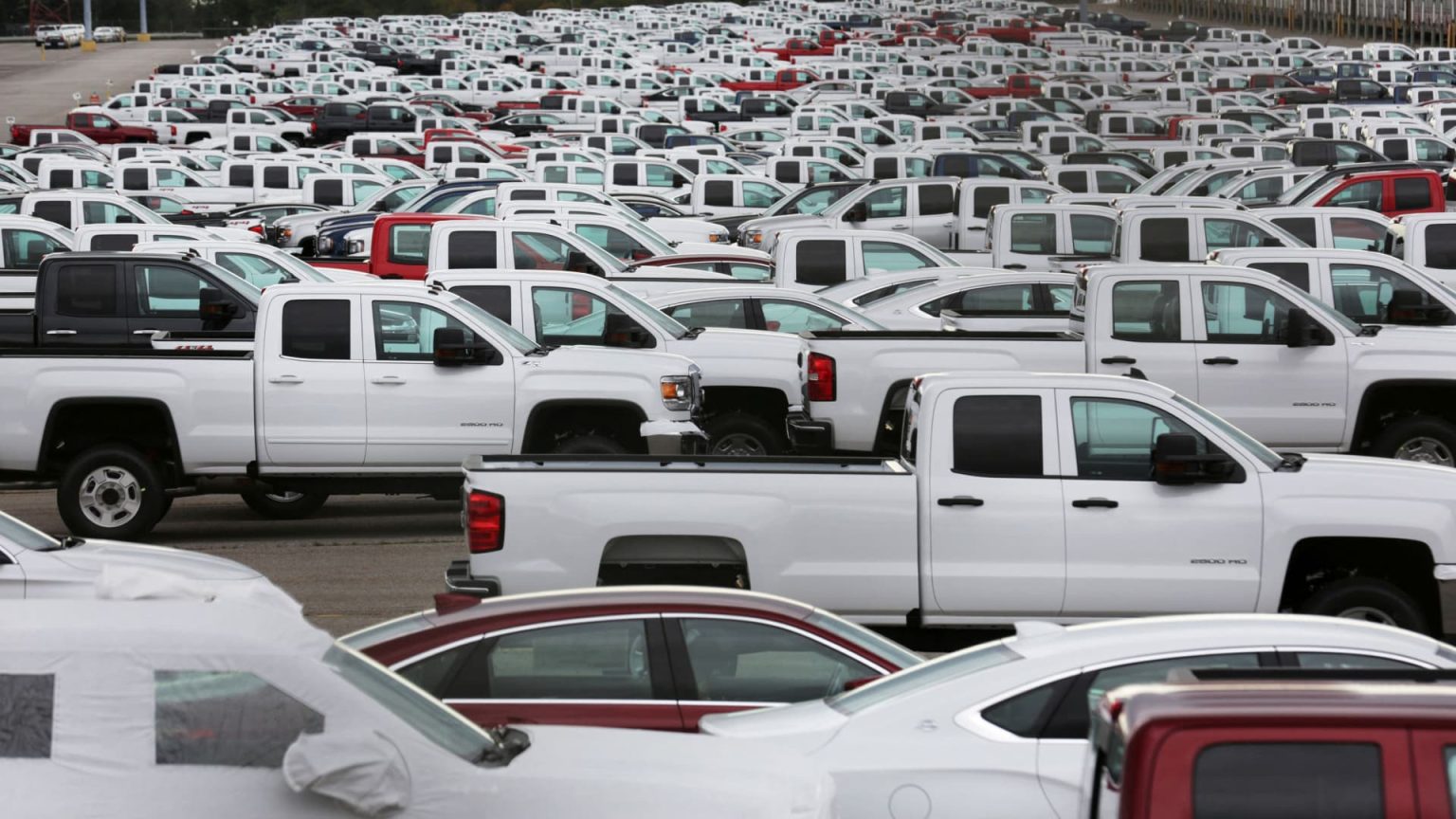In response to President Trump’s recent announcement regarding tariffs on imported vehicles, General Motors (GM) experienced a marked decline in its stock performance. Shares plummeted over 7% during trading, significantly underperforming against its competitors, Ford and Stellantis. Analysts attribute GM’s vulnerability to its substantial reliance on imports, particularly from Mexico, raising concerns about the company’s exposure to the new tariffs aimed primarily at vehicles not produced domestically.
| Article Subheadings |
|---|
| 1) Overview of the Tariff Announcement |
| 2) Impact on General Motors |
| 3) Comparative Analysis with Competitors |
| 4) Financial Implications and Market Reaction |
| 5) Future Outlook for the Automotive Industry |
Overview of the Tariff Announcement
The announcement made by President Trump introduced a 25% tariff on all vehicles not manufactured in the United States, aiming to bolster domestic production. This executive order, signed on Wednesday, has sparked concerns across the automotive industry. Notably, while GM’s stock reflected a significant downturn immediately following this announcement, the tariff indicates a considerable shift in trade policy that could reshape the landscape of North American automotive manufacturing. The order provides some leniency for parts compliant with the United States-Mexico-Canada Agreement (USMCA), but the immediate ramifications for companies like GM remain uncertain.
Impact on General Motors
General Motors, which has a substantial share of its production facilities in Mexico, is particularly vulnerable to these tariffs. Analysts have pointed out that around 52% of GM’s vehicle sales in the U.S. during the first three quarters of 2024 were produced domestically. However, the remaining percentage includes vehicles assembled in Canada and Mexico, and the import of parts is a crucial factor for the company’s operational balance.
“GM has the most exposure to Mexico,”
stated analysts from Deutsche Bank, highlighting how this dependency may limit GM’s ability to navigate the increased costs associated with the newly instated tariffs.
Comparative Analysis with Competitors
When comparing GM’s exposure to tariffs with its competitors, the disparity becomes evident. Ford and Stellantis have demonstrated a higher percentage of vehicles being assembled in the U.S., which ultimately shields them from some of the impacts of this tariff initiative. For instance, only 21% of Ford’s vehicles were imported, while 39% of Stellantis vehicles were accounted for through manufacturing in Canada and Mexico. This critical difference delineates a competitive edge for these automakers in the face of heightened tariffs, potentially allowing them to absorb costs more effectively without severely impacting their financial health.
Financial Implications and Market Reaction
In response to the tariff announcement, GM has seen a 13% decline in stock value since the beginning of the year. Investors showed increased apprehension following the fourth quarter earnings report, where concerns about tariff impacts were not adequately addressed. The reaction from analysts has been mixed; some believe GM must recalibrate its approach to production and sourcing to mitigate risk associated with the tariffs. The significant drop in stock performance illustrates the volatility present in the automotive sector as stakeholders react to policy changes and their anticipated long-term impacts.
Future Outlook for the Automotive Industry
Looking forward, the automotive industry faces a challenging landscape marked by substantial tariffs and shifting trade policies. As companies like GM recalibrate their operations to adapt to new economic parameters, it will be essential for them to strategically enhance their domestic manufacturing capacities. Analysts emphasize the importance of being proactive in finding ways to alleviate the burden of tariffs, ensuring competitiveness not only in pricing but also in the overall strategic direction of the company. The broader implications may initiate a trend towards increasing local production, fundamentally altering the operational frameworks of global automotive giants.
| No. | Key Points |
|---|---|
| 1 | President Trump’s tariff announcement imposes a 25% tariff on imported vehicles. |
| 2 | General Motors stock fell over 7% following the tariff news, a significant outperformance compared to competitors. |
| 3 | GM has a higher dependency on Mexico for vehicle assembly compared to Ford and Stellantis. |
| 4 | Concerns about tariffs were not addressed in GM’s latest earnings report, raising investor apprehension. |
| 5 | The future landscape of the automotive industry may shift towards increased domestic production in response to tariffs. |
Summary
The recent announcement from President Trump regarding tariffs on imported vehicles has created a ripple effect within the automotive industry, leading to a sharp decline in General Motors’ stock performance. Analysts suggest that GM’s heavy reliance on imports, particularly from Mexico, puts it at a competitive disadvantage compared to its peers. As the industry grapples with the implications of these tariffs, a potential shift towards bolstering domestic manufacturing appears inevitable, setting the stage for a transformative period for automotive manufacturers.
Frequently Asked Questions
Question: What are the implications of the new tariffs for General Motors?
The new 25% tariffs primarily affect General Motors because of its significant reliance on imported vehicles and parts, particularly from Mexico. The tariffs may increase production costs for GM and pressure its stock market performance.
Question: How do these tariffs compare across the automotive industry?
While the tariffs primarily impact GM due to its import structure, competitors such as Ford and Stellantis have a lower percentage of imports, making them less vulnerable to this trade policy change. This disparity can provide them a competitive advantage in terms of cost management.
Question: What might the future hold for automotive manufacturing in the U.S.?
In light of the tariffs, automotive manufacturers may be incentivized to increase domestic production capacities to mitigate risks associated with import tariffs. This could lead to a restructuring of operations and a focus on sourcing parts and assembling vehicles within the U.S. market.


